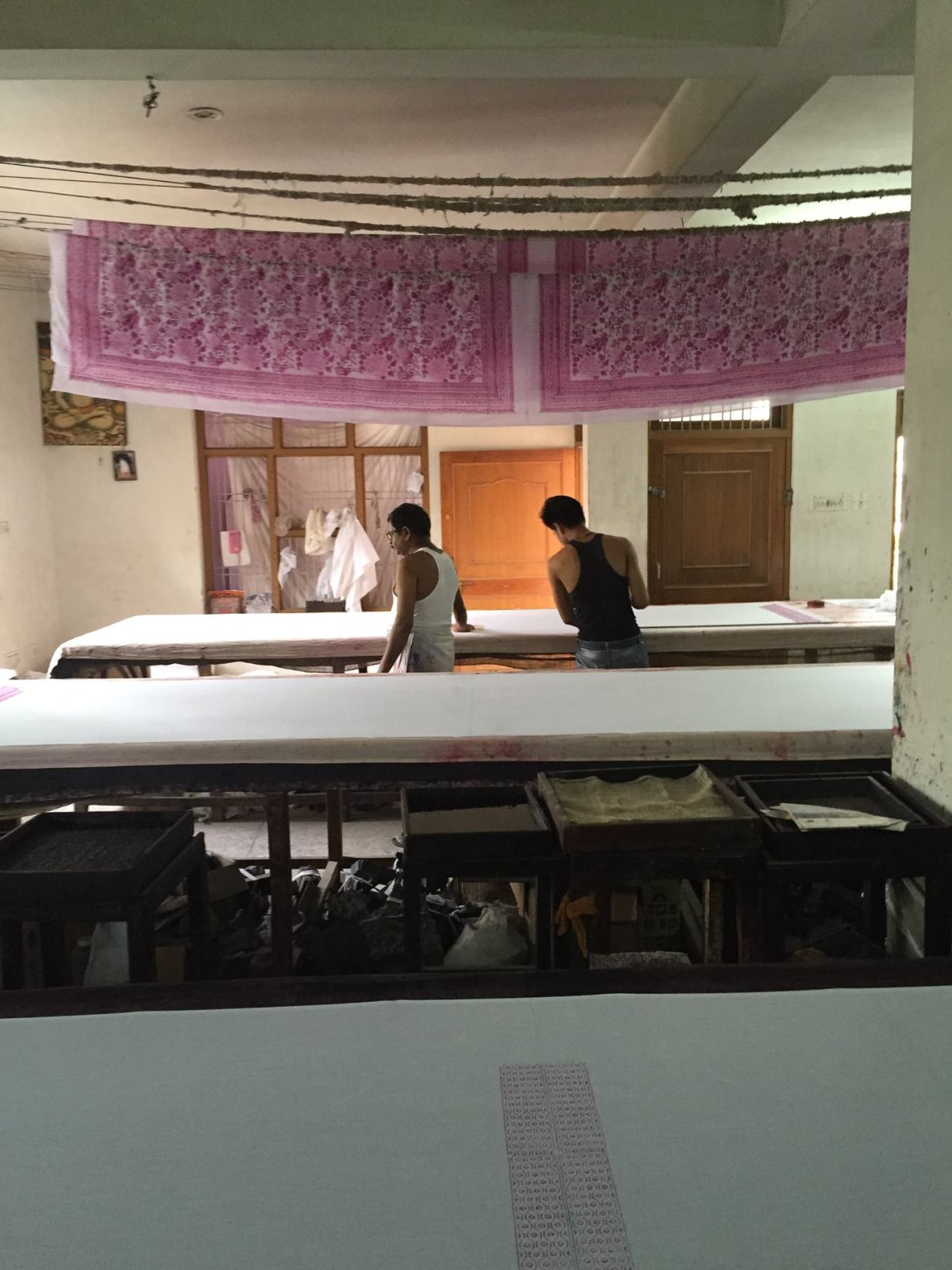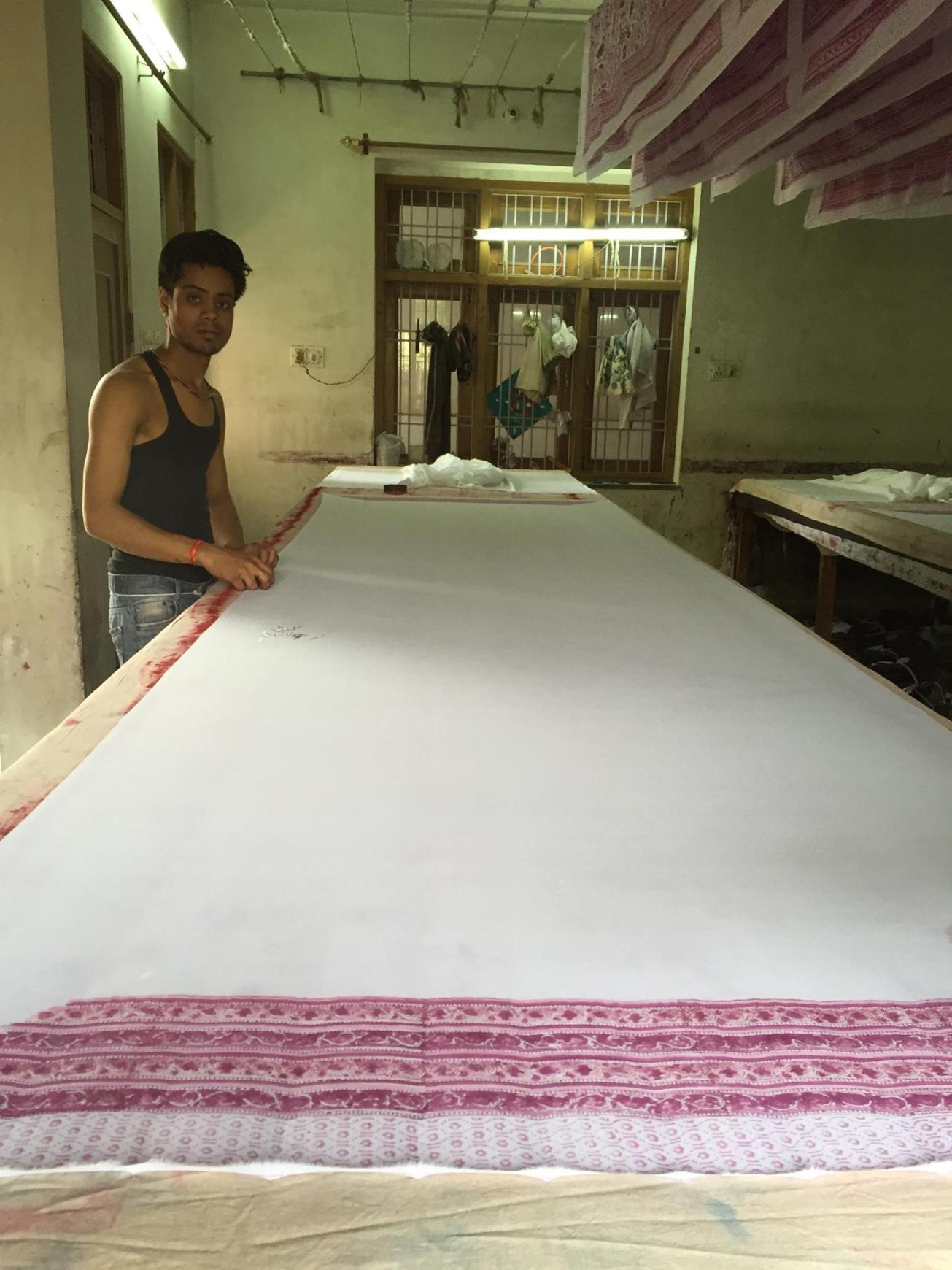Yesterday Joe was in a remote village on the outskirts of Jaipur, finding out more about the skills used to make the block printed products we sell. Here’s what he found out:
Hand block printing is a centuries old Indian art form that utilises a hand carved teak wood block that is dipped in dye and stamped by hand onto cotton or silk, the entire process is a lengthy one which consists of many steps.
The colour that is used is 100% natural.
The dyes or colourants are derived from plants, invertebrates, or minerals. The majority of natural dyes are vegetable dyes and are from plant sources roots, berries, bark, leaves, and wood and other organic sources such as fungi and lichens. Due to the fact only natural dyes are used, not all colours are possible.
The design for the block is usually a traditional Indian motif. The motif is traced onto a block by a master craftsman who then chips away at the block to create a stamp, depending on the design, this can take around 6 to 10 days.
The process
The fabrics used are from South India. The printing process begins by pre-washing the fabrics in the river in order to reduce water consumption, this takes 3 days. The fabric is then dyed, laid flat on a long table and fixed with pins.
The block is then dipped in the natural dye and stamped firmly by hand onto the fabric in specific orders to create the pattern. A master craftsman can print up to 15 metres a day.
Finally, the fabric is rinsed in the river and hung to dry in the sun.




